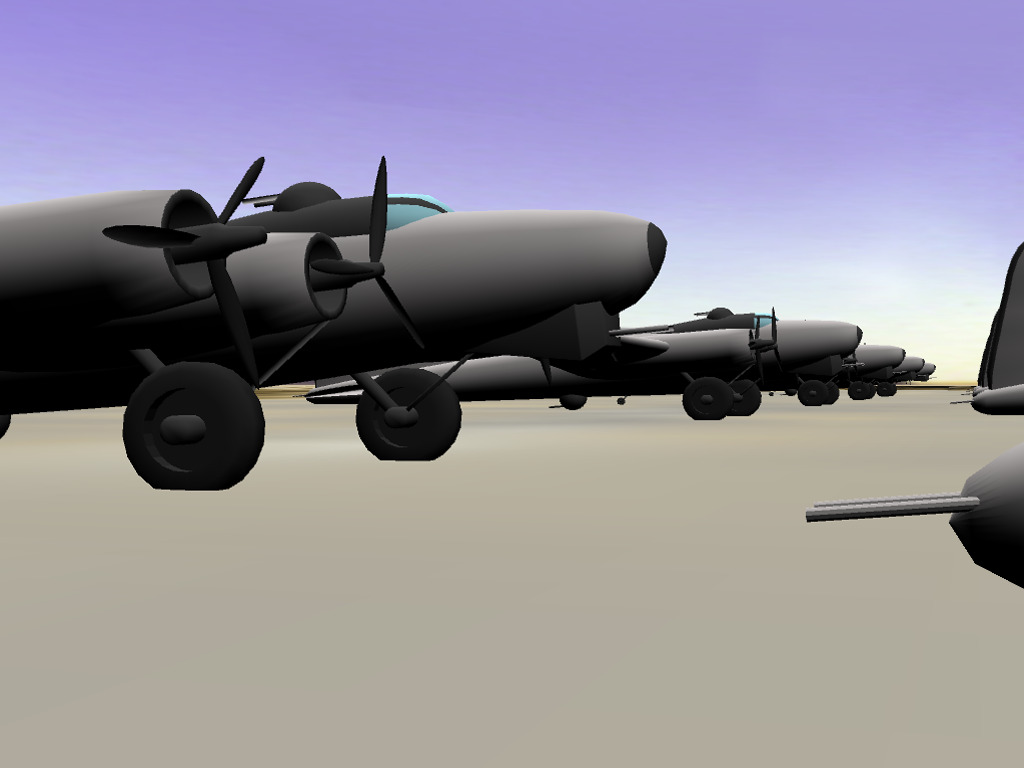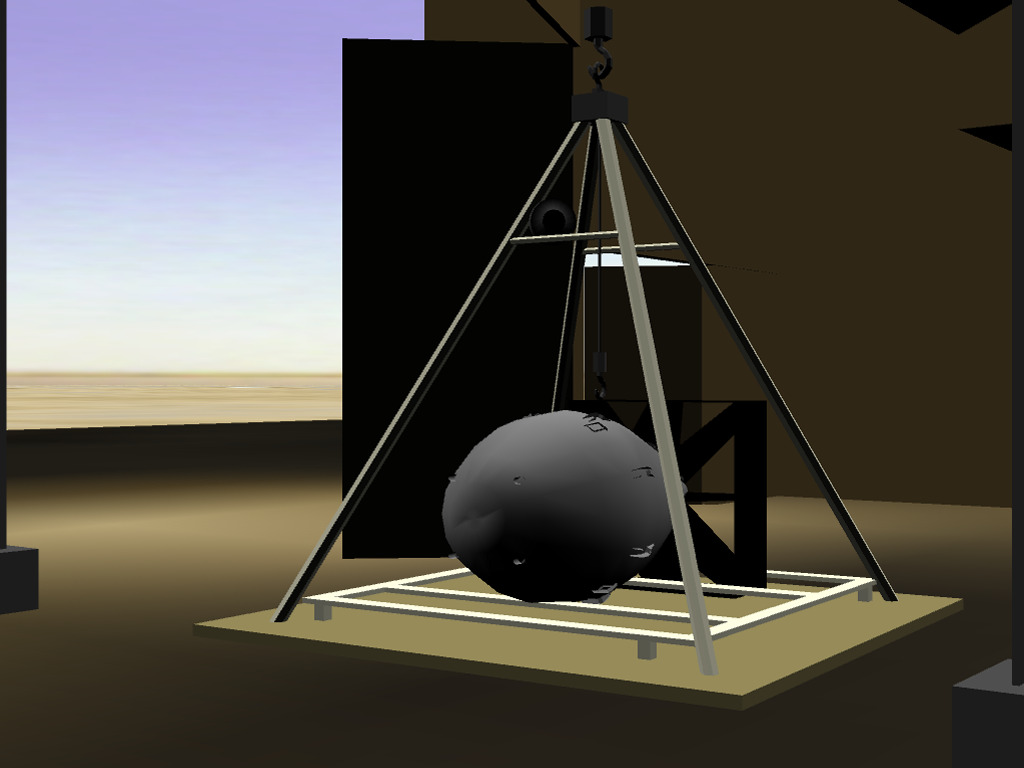
The goal of W-47, led by Professor Tim Nohe of the Visual Arts Department, is to uncover, visualize, and bring back to life lost structures and facilities that played a pivotal role in the United States’ development and use of nuclear weapons during World War II. The “Little Boy” and the “Fat Man” atomic bombs were developed by the Manhattan Project in an ultra-secret operation code-named “Project W-47” at the isolated and now largely abandoned Wendover Army Airfield, Wendover, Utah. What remains in Wendover today are the tracings of building foundations, scattered artifacts, and a few preserved structures such as the “Enola Gay hangar” and an atomic bomb loading pit. From these residual marks, W-47 uses the computer to trace the illegible, to raise these lost structures up from the rubble, and to bring the ghosts back to life.
The simulation recreates the building features of the ultra-secret W-47 project and situates them in an aerial view of Wendover Field derived from satellite imagery. Buildings were recreated from exacting measurements made in the field at Wendover, and this “ground truth” enhances the experience of virtually walking through or flying over the barren salt flats.



W-47 asserts a new approach to the documentary by examining:
- What Was – by recovering archival film footage, sound recordings, documents, and photographs.
- What Is – by documenting the environs, ruins, and artifacts of present-day Wendover.
- What May Have Been – by merging a ghostly past and present with synthetic re-creations of the real that are neither past nor present.
Researchers and Creators
Artist/Researcher: Tim Nohe, Department of Visual Arts
Technical Director: Eric Smallwood
3D Modeling: Aaron Basch, John Rouse, Sina Taherkani
Students
IRC Graduate Assistant: Chad Eby
This IRC interdisciplinary collaboration is being supported in part by funds from the Robert W. Deutsch Foundation.
Imaging Research Center, UMBC © 2024